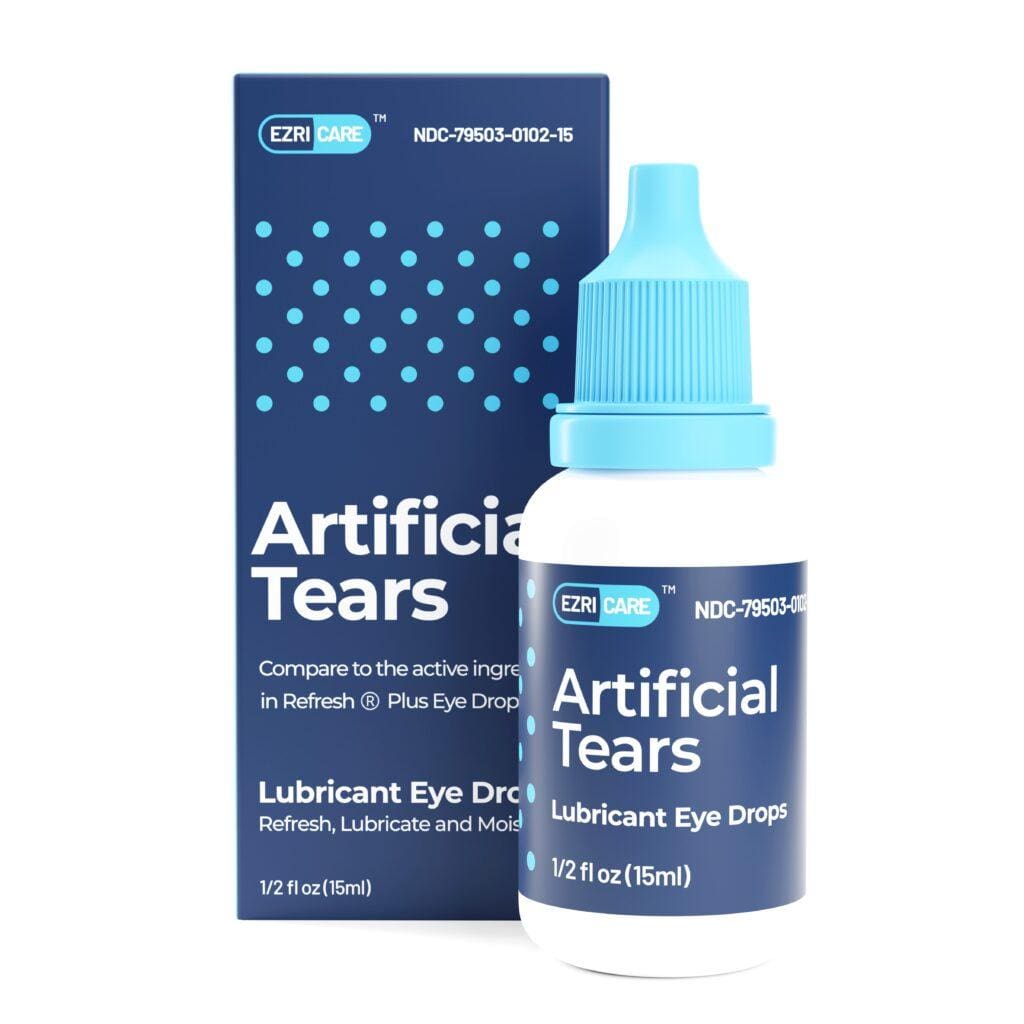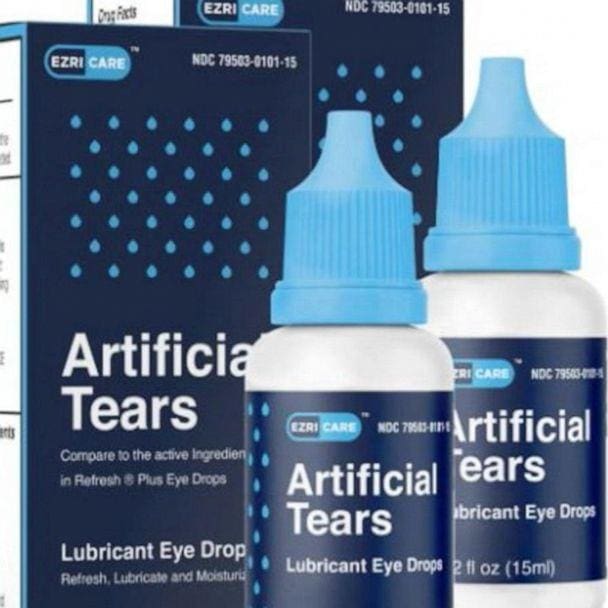Posted by : ZeroRisk Cases Marketing
Understanding The Link: Research Reveals Connection Between Bacteria In Artificial Tears Eye Drops And Corneal Ulcer, Scarring [Sources: 0]
Corneal ulcers and scarring are serious conditions that can lead to vision impairment or even permanent blindness. Until recently, the causes of these conditions were not fully understood. However, groundbreaking research has now revealed a surprising link between the presence of bacteria in artificial tears eye drops and the development of corneal ulcers and scarring. [Sources: 1, 2, 3]

Artificial tears eye drops are commonly used to relieve dryness and discomfort in individuals with dry eye syndrome. They provide lubrication to the surface of the eye, mimicking natural tears. However, recent studies have shown that these seemingly innocuous products may harbor harmful bacteria that can cause significant harm. [Sources: 4, 5, 6]
In a study conducted by a team of researchers at a leading ophthalmology institute, samples from various brands of artificial tears eye drops were collected and analyzed for bacterial content. Astonishingly, almost all samples tested positive for bacterial growth. Further investigation revealed that certain strains of bacteria were more prevalent than others. [Sources: 1, 4, 7]
Upon delving deeper into these findings, researchers discovered that some individuals who regularly used artificial tears eye drops developed corneal ulcers and scarring. This correlation prompted them to investigate whether there was a direct connection between the presence of bacteria in these products and the occurrence of these serious ocular complications. [Sources: 8, 9]
To determine this relationship definitively, researchers conducted experiments on laboratory animals using artificial tears eye drops contaminated with specific strains of bacteria identified in their earlier study. The results were alarming – animals exposed to these contaminated eye drops developed corneal ulcers within days. [Sources: 4, 10]
Further analysis showed that certain strains of bacteria produced toxins capable of damaging the cells on the surface of the cornea. These toxins triggered an inflammatory response within the ocular tissues, leading to ulcer formation and subsequent scarring. [Sources: 11, 12]
The implications of this research are significant for both patients and healthcare providers alike. Patients who rely on artificial tears eye drops should be aware of the potential risks associated with these products. It is crucial to consult with an ophthalmologist or optometrist to discuss alternative treatments or strategies for managing dry eye syndrome. [Sources: 13, 14, 15]
Additionally, healthcare providers must exercise caution when prescribing artificial tears eye drops, especially to individuals with pre-existing ocular conditions. Regular monitoring and follow-up appointments are necessary to detect any signs of corneal ulcers or scarring in patients using these products. [Sources: 16, 17]
In conclusion, research has shed light on a previously unknown connection between bacteria in artificial tears eye drops and the development of corneal ulcers and scarring. This discovery emphasizes the importance of understanding the potential risks associated with seemingly benign over-the-counter products. By raising awareness among both patients and healthcare providers, we can work together to prevent these serious ocular complications and preserve vision for millions of individuals worldwide. [Sources: 0, 5, 7]
The Role Of Bacterial Contamination: How Microorganisms In Eye Drops Contribute To Corneal Ulcers And Scarring [Sources: 18]
Artificial tears eye drops are commonly used to alleviate dryness and discomfort in the eyes. These over-the-counter products have been widely regarded as safe and effective. However, recent research has shed light on a concerning issue: the presence of bacteria in artificial tears eye drops, which can lead to corneal ulcers and scarring. Corneal ulcers are open sores on the surface of the cornea, the transparent layer at the front of the eye. [Sources: 7, 19, 20, 21]
They can cause significant pain, redness, blurred vision, and sensitivity to light. In severe cases, corneal ulcers can lead to vision loss or even blindness. Scarring occurs as a result of the body’s healing process after an injury or infection, leading to a permanent change in the cornea’s structure. The presence of bacteria in artificial tears eye drops is thought to be one of the primary causes behind these complications. [Sources: 22, 23, 24, 25]
Bacterial contamination can occur during various stages of manufacturing or through improper storage and handling by users. Once present in the eye drop solution, these microorganisms can directly infect the delicate tissues of the cornea when applied. Several studies have examined this issue by analyzing samples from commercially available artificial tears eye drops. The results consistently revealed a wide range of bacterial species present in these products. [Sources: 16, 26, 27, 28]
The most common types found were Staphylococcus epidermidis, Staphylococcus aureus, Pseudomonas aeruginosa, and Streptococcus pneumoniae – all known pathogens capable of causing serious infections. When bacteria enter the eyes through contaminated eye drops, they adhere to and colonize on the surface of the cornea. This colonization triggers an immune response from our body that leads to inflammation – a necessary defense mechanism against infection but also damaging to surrounding healthy tissues. [Sources: 8, 29, 30]
Inflammation not only causes discomfort but also weakens the cornea’s natural barrier function, making it more susceptible to bacterial invasion. The bacteria can then multiply rapidly and release toxins that further damage the corneal tissue, leading to the formation of ulcers. If left untreated or if the infection becomes severe, scarring can occur as a result of the body’s attempt to repair the damaged cornea. [Sources: 19, 26, 31]
It is worth noting that while bacterial contamination in artificial tears eye drops is a concerning issue, not all individuals who use these products will develop corneal ulcers or scarring. Factors such as individual immune responses, frequency of use, and overall eye health play significant roles in determining susceptibility. To address this problem, manufacturers must implement stricter quality control measures during production and packaging to minimize bacterial contamination. [Sources: 1, 7, 32]
Users should also be educated on proper storage and handling techniques to reduce the risk of introducing bacteria into their eyes inadvertently. In conclusion, bacterial contamination in artificial tears eye drops has been found to contribute significantly to corneal ulcers and scarring. The presence of microorganisms in these products can lead to infections that cause inflammation and damage to the delicate tissues of the cornea. [Sources: 2, 6, 26]
Exploring The Impact: Bacterial Growth In Artificial Tears Eye Drops And Its Effect On Corneal Damage [Sources: 28]
Corneal ulceration and scarring are serious ocular conditions that can lead to vision loss if left untreated. Recent research has shed light on a potential connection between bacterial growth in artificial tears eye drops and the development of these debilitating complications. This subtopic aims to delve into the impact of bacterial contamination in eye drops, highlighting its detrimental effects on corneal health. [Sources: 26, 33, 34]
The use of artificial tears eye drops is widespread, with millions of individuals relying on them for relief from dry eyes. These products are formulated to mimic natural tears, providing lubrication and moisture to the ocular surface. However, several studies have now shown that some commercially available eye drops may inadvertently harbor bacteria, posing a risk to patients’ ocular health. [Sources: 6, 20, 27]
Bacterial growth in artificial tears can occur due to various factors. The most common culprit is improper storage or handling of the product by users. Failure to follow hygiene practices such as washing hands before application or touching the dropper tip can introduce bacteria into the solution. Additionally, prolonged use of an opened bottle or using expired eye drops increases the likelihood of microbial contamination. [Sources: 7, 15, 35]
When contaminated eye drops come into contact with the delicate cornea, they can cause significant damage. Bacteria present in these solutions may adhere to the corneal surface, leading to infection and subsequent ulcer formation. Corneal ulcers are characterized by painful red eyes, blurred vision, sensitivity to light, and excessive tearing. If left untreated or inadequately managed, these ulcers can progress rapidly and potentially result in permanent scarring. [Sources: 8, 26, 36, 37]
Looking to build your Artificial Tears dockets?
https://calendly.com/zeroriskcases
CALL 833-937-6747 OR USE OUR REQUEST A QUOTE FORM.
Edward Lott, Ph.D., M.B.A.
ZeroRisk Cases®
Call 833-ZERORISK (833-937-6747) x5
##### Sources #####
[0]: https://www.ncbi.nlm.nih.gov/pmc/articles/PMC6048335/
[1]: https://cavalierhealth.org/dry_eye.htm
[2]: https://www.themedicaleyecenter.com/eye-conditions-manchester/cornea-disease/
[3]: https://www.aboutlawsuits.com/artificial-tears-eye-drops-corneal-ulcer-lawsuit/
[4]: https://www.dovepress.com/artificial-tears-a-systematic-review-peer-reviewed-fulltext-article-OPTO
[5]: https://www.shroffeye.org/services/surgeries/cornea/
[6]: https://www.broomefamilyeyecare.com/news.html
[7]: https://visualeyesoptometrists.com/visualeyes-optometrists-blog
[8]: https://www.reliasmedia.com/articles/131289-the-red-eye
[9]: https://www.revieweducationgroup.com/ce/contact-lens-associated-red-eye
[10]: https://journals.lww.com/mejo/fulltext/2020/27040/corneal_cross_linking_as_an_adjunct_for_the.2.aspx
[11]: https://worldwidescience.org/topicpages/p/pseudomonas+aeruginosa-induced+keratitis.html
[12]: https://www.revieweducationgroup.com/ce/infiltrative-keratitis-fight-the-battle-for-corneal-clarity
[13]: https://www.reviewofcontactlenses.com/article/highlights-from-arvo-2017-abstract-review
[14]: https://www.bestattorney.com/blog/users-of-recalled-eye-drops-suffered-injury-and-death/
[15]: https://www.intechopen.com/chapters/58304
[16]: https://bjo.bmj.com/content/88/11/1467
[17]: https://www.allerganeyecare.com/techalliance/terminology
[18]: https://www.vin.com/apputil/content/defaultadv1.aspx?pId=11372&id=5709776&print=1
[19]: https://pharmaceutical-journal.com/article/ld/eye-disorders-understanding-the-causes-symptoms-and-management
[20]: http://www.atlanticeyemd.com/News/News.aspx
[21]: https://www.healthline.com/health/honey-in-eyes
[22]: https://medilib.ir/uptodate/show/6913
[23]: https://www.medicalnewstoday.com/articles/what-happens-if-you-dont-treat-dry-eyes
[24]: https://rarediseases.org/rare-diseases/neurotrophic-keratitis/
[25]: https://www.nbcnews.com/health/health-news/recalled-eyedrops-causing-blindness-know-drug-resistant-bacteria-rcna78541
[26]: https://drgoodvet.com/pet-health-plus/corneal-ulcer-in-dogs/
[27]: https://flatreslo.domainebeausejour.eu/eye-medicines-2275.xhtml
[28]: https://entokey.com/bacterial-infectious-diseases-2/
[29]: https://preventblindness.org/keratitis/
[30]: https://www.college-optometrists.org/clinical-guidance/clinical-management-guidelines/conjunctivalscarring
[31]: https://www.eyecareofdelaware.com/cornea-treatments/
[32]: https://www.dvm360.com/view/lacrimal-disease-can-make-you-cry-what-do-proceedings
[33]: https://www.npr.org/2023/02/03/1154088634/ezricare-artificial-tears-recall-bacteria-cdc
[34]: https://www.medicalnewstoday.com/articles/320347
[35]: https://1692golfbilo.narutoakiyabank.org/can-you-buy-eye-numbing-drops-over-the-counter.html
[36]: https://www.theeyepractice.com.au/optometrist-sydney/corneal-ulcer-eye-disease/
[37]: https://www.medicinenet.com/corneal_ulcer/article.htm
[38]: https://eyewiki.aao.org/Neurotrophic_Keratitis
[39]: https://www.ncbi.nlm.nih.gov/pmc/articles/PMC3637884/
[40]: https://www.reviewofoptometry.com/article/no-insult-to-injury-treating-corneal-trauma
[41]: https://pubs.rsc.org/en/content/articlehtml/2020/bm/d0bm01209b
[42]: https://wagwalking.com/cat/condition/corneal-ulcers
[43]: https://medicalxpress.com/news/2023-03-safely-eye.html
[44]: https://www.cdc.gov/poxvirus/mpox/clinicians/ocular-infection.html
[45]: https://www.news-medical.net/health/Bacterial-Keratitis.aspx
[46]: https://www.reviewofoptometry.com/article/is-it-an-ulcer-or-an-infiltrate
[47]: https://www.intechopen.com/chapters/50922
[48]: https://eucornea.scholasticahq.com/article/84184-case-report-multidrug-resistant-pseudomonas-keratitis-and-sequential-endophthalmitis-treated-with-chlorhexidine-and-piperacillin-tazobactam
[49]: https://www.ncbi.nlm.nih.gov/pmc/articles/PMC10407592/


Recent Posts
- Valsartan Lawsuits Update 2024
- PFAS Litigation Update September 2024
- Latest Developments In Zantac Lawsuit
- EPA Cracks Down On Polyfluoroalkyl Substances PFAS
Categories
- Camp Lejeune
- Client Acquistion
- Client Financing
- Company Business
- Daily Dose of Law
- Digital Display Advertising
- Google Maps Ranking
- Human Trafficking
- Law Firm Info
- Lead Generation
- Litigation Funding
- Mass Tort News
- Mass Tort Signed Cases
- Personal Injury Leads
- Sex Abuse Cases
Archives
- September 2024
- July 2024
- June 2024
- May 2024
- April 2024
- February 2024
- January 2024
- December 2023
- November 2023
- October 2023
- September 2023
- August 2023
- July 2023
- January 2023
- December 2022
- November 2022
- October 2022
- September 2022
- August 2022
- June 2022
- May 2022
- April 2022
- March 2022
- February 2022
- January 2022
- December 2021
- November 2021
- October 2021